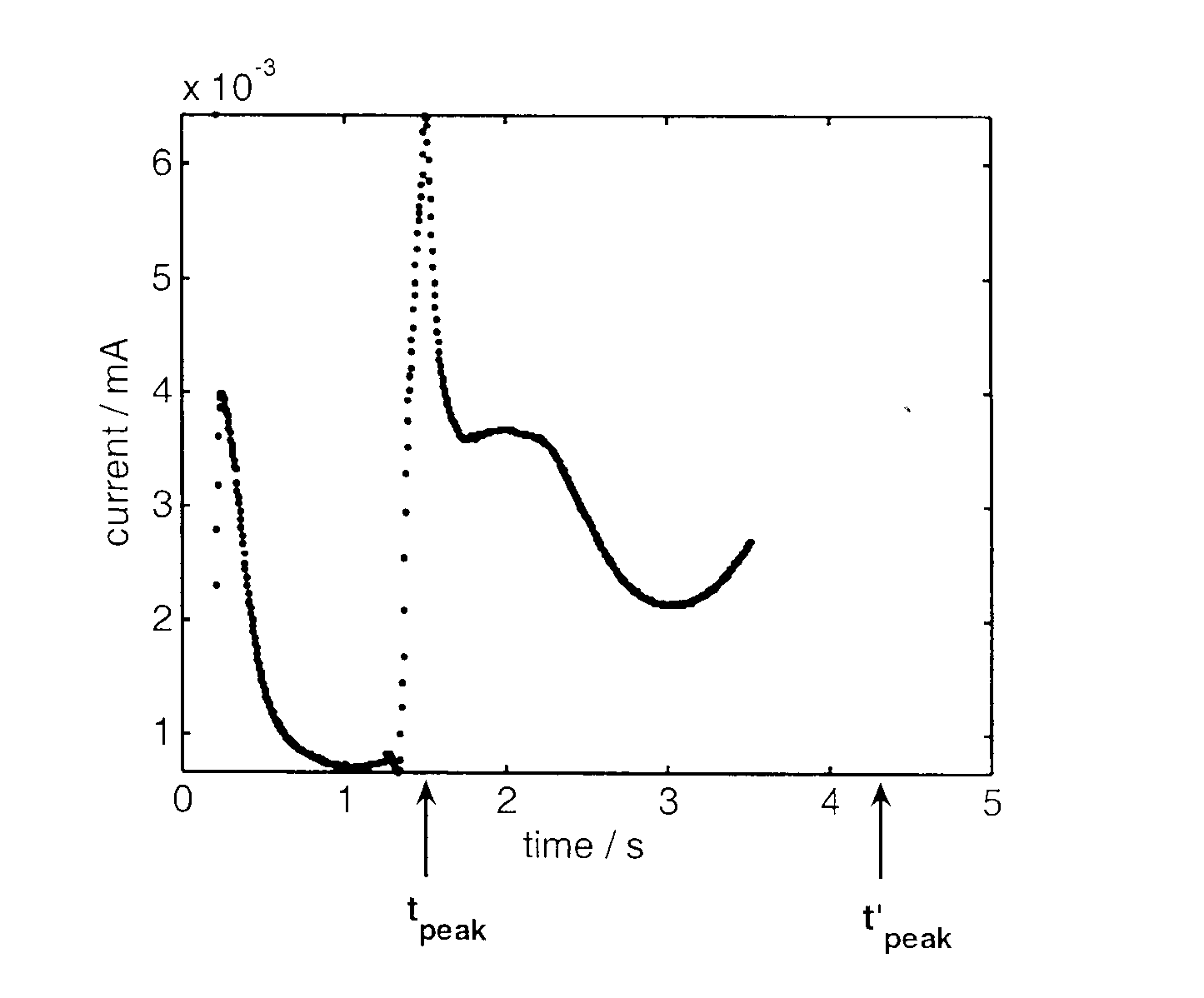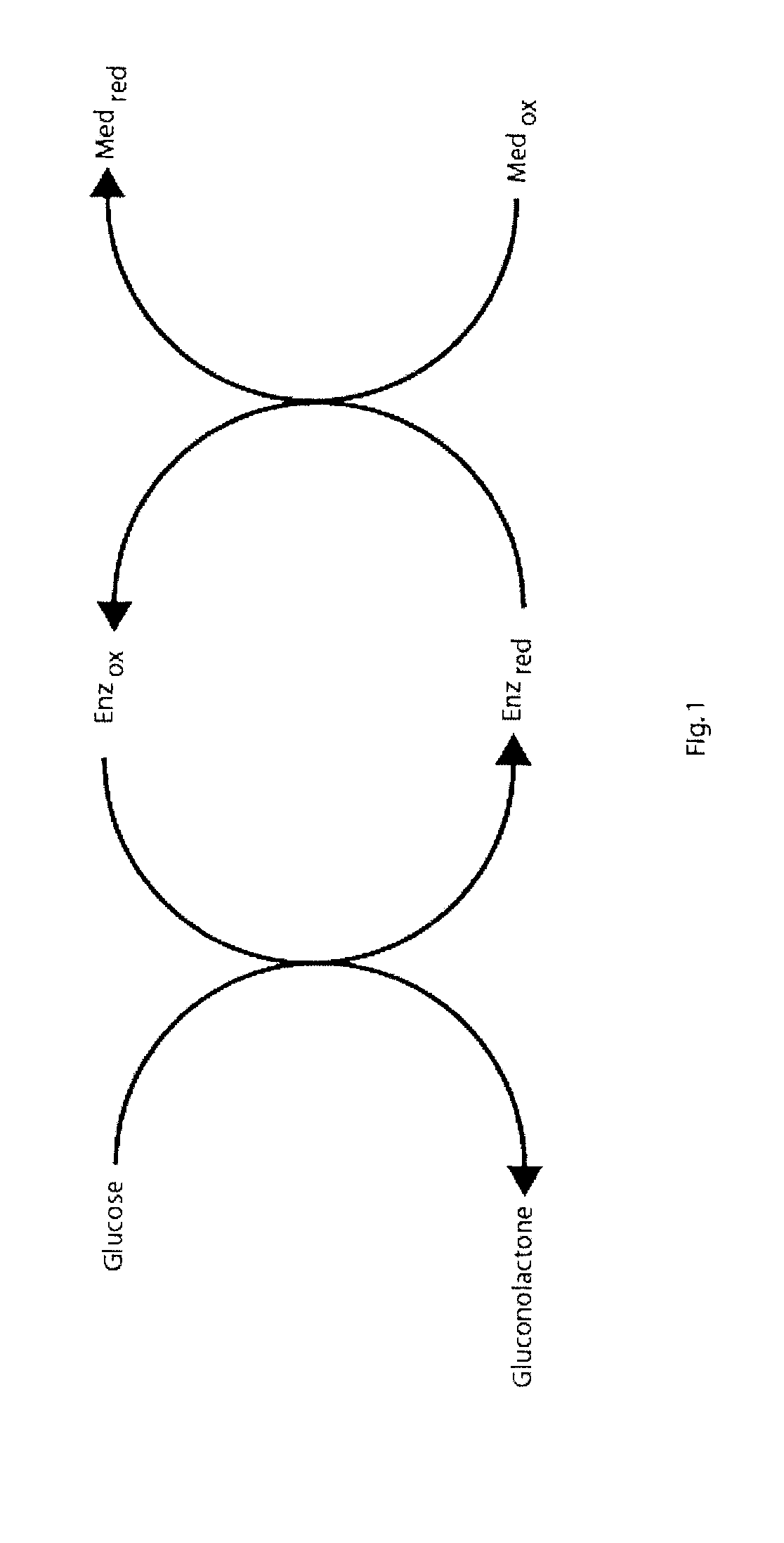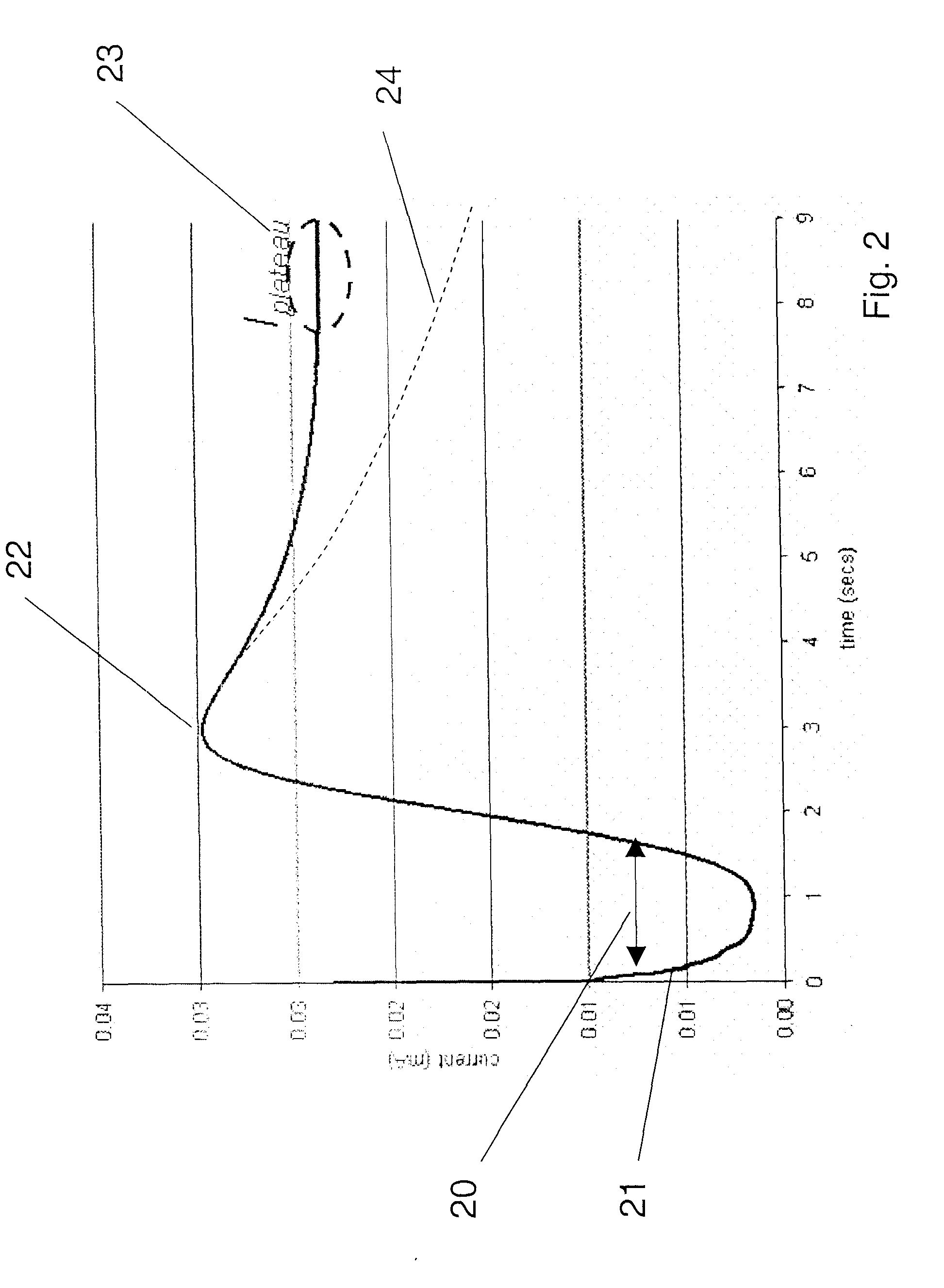Method and Apparatus for Detection of Abnormal Traces during Electrochemical Analyte Detection
a technology of electrochemical analyte detection and detection method, applied in the field of abnormal traces identification, can solve the problems of abnormal signal characteristics, not all traces,
- Summary
- Abstract
- Description
- Claims
- Application Information
AI Technical Summary
Benefits of technology
Problems solved by technology
Method used
Image
Examples
Embodiment Construction
[0022] I. Definitions
[0023] As used in the specification and claims of this application, the following definitions should be applied:
[0024] (a) “analyte” refers to a material of interest that may be present in a sample. In the present application, the examples use glucose as an analyte, but the present invention is independent of both the type and amount of analyte. Accordingly, application to glucose detection systems should be viewed as merely a specific and non-limiting embodiment.
[0025] (b) “Cottrell decay” or “Cottrell current” is current that can be modeled by the Cottrell equation, i.e.,
1 / I2∝t
[0026] where I is the current and t is time. The square root of the slope of 1 / I2 versus t is a parameter called the “Cottrell slope.”
[0027] (c) “determination of an analyte” refers to qualitative, semi-quantitative and quantitative processes for evaluating a sample. In a qualitative evaluation, a result indicates whether or not analyte was detected in the sample. In a semi-quantita...
PUM
| Property | Measurement | Unit |
|---|---|---|
| voltage | aaaaa | aaaaa |
| time | aaaaa | aaaaa |
| frequency | aaaaa | aaaaa |
Abstract
Description
Claims
Application Information
 Login to View More
Login to View More - R&D
- Intellectual Property
- Life Sciences
- Materials
- Tech Scout
- Unparalleled Data Quality
- Higher Quality Content
- 60% Fewer Hallucinations
Browse by: Latest US Patents, China's latest patents, Technical Efficacy Thesaurus, Application Domain, Technology Topic, Popular Technical Reports.
© 2025 PatSnap. All rights reserved.Legal|Privacy policy|Modern Slavery Act Transparency Statement|Sitemap|About US| Contact US: help@patsnap.com



